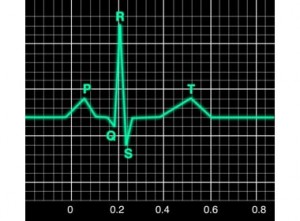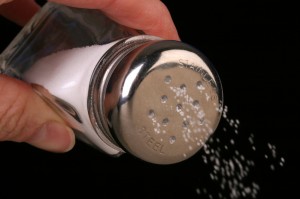Please direct all media inquiries to:
Patrick A. Berzinski
Tranquility49 PR
patrick@tranquility49.com
+1-212-519-8628 (office)
+1-212-519-9804 (fax)

Vitamins, vitamins, everywhere! Given the excess availability of vitamins as supplements and as dietary fortification in a vast number of foods, is it possible that we are poisoning ourselves with excessive intake of vitamins?
A vitamin, by its very definition, is needed in our bodies in minute quantities. So why are vitamins added to so many of our daily foods?
The food industry has added vitamins and minerals to a broad spectrum of our foods to make up for the damage (i.e., the stripping of nutrients) that occurs in the sometimes radical processing of foodstuffs. In addition, “vitamin fortification” has been used as a marketing ploy to give essentially bad or empty-calorie foods the illusion of being healthy for the consumer. To make things even worse, the vitamin hype feeds into the psychological trap that lures the consumer into thinking, “if a little is good for you, then more must be even better!” Now evidence is growing that too much supplementation may increase one’s chance of aging faster and dying earlier, according to a recent study released in the Archives of Internal Medicine.
Read more: http://www.foxnews.com/health/2011/10/14/are-your-supplements-killing/#ixzz1boqyTbYM
But back to the ploy of “fortifying foods with vitamins and minerals,” which, since the hugely successful marketing campaigns of the 1960s aimed at the parents of growing Baby Boomers, has become universal and excessive.
Cereals and food bars with more than 100 percent of your daily needs are now quite common. When I look at the ingredient list on the label of one of these products, I have to question whether one is about to consume some form of cereal, or Pop Tarts, or simply a large multivitamin.
In my last article, I pointed out the problems of multivitamin consumption in the diets of our older population. If our food industry continues to manipulate the vitamin and mineral content of the foods we eat, in the sometimes dramatic fashion I have described, we will begin to see the same negative effects of excessive fortification, such as too much iron and calcium, in the general-population’s diet as we now see resulting from over-supplementation in the diets of our older consumers.
Following are some examples of this.
 Caution! Reading this article may be detrimental to your health.
Caution! Reading this article may be detrimental to your health.
Indeed, if you are sitting still while reading this article, you may be increasing your risk of heart attack, stroke, obesity, diabetes and many other diseases.
So – what course of action does the doctor prescribe?
First, you can put down the article, or turn off the computer, and stop reading. Or, in these days of modern technology, you could begin reading while walking, gaining intellectual enlightenment by using a handheld text-retrieval device, or even by listening to an audio version or podcast download of the book or article of your choice.
Try reading while on an exercise bike or tread mill. This can be an efficient use of time (combing exercise with reading). Simple changes in our lifestyle can take us from the sedentary, obesity- and heart attack-prone environment to a world of health through movement.
“The Saving America Series” presents creative uses of technology that can be adopted as a bridge to physical, emotional and economic health. This dynamic series also challenges everyone to participate in a needed renaissance of American health culture. We must do more to engage our youth explore new and innovative ways to promote physical, emotional and financial health, harnessing the energy of our youth without forgetting the wisdom of our parents and ancestors.
The time has come for us to embrace the willingness of young Americans to think differently and to view the world in innovative ways.
We propose leveraging all of our attributes as an advanced nation to encourage individuals throughout this country to submit ingenious ideas and concepts, to engage with technical schools, colleges, universities to begin exploring the problems of our national health culture, and to begin finding targeted, common-sense solutions to the health crises we face.
The goal is to prevent illness by using technology applications in ways as dramatic as those used in curing illness after the fact. This must be the medical community’s new mantra. No longer can the community of physicians be separate from the public health sector. We should be looking at preventive alternatives to performing costly procedures like open-heart surgery, placing stents or doing bypass operations, when an early change in the elements of an individual’s everyday lifestyle could achieve the same or better results.
 When there is a family history of early-onset coronary artery disease, or a family history of high cholesterol, the current recommendation is to screen a child for elevated cholesterol levels. In addition, screening for high cholesterol is required if a child is obese or suffering from childhood forms of hypertension or diabetes. It is currently recommended that this screening should occur between the ages of two and 10 years.
When there is a family history of early-onset coronary artery disease, or a family history of high cholesterol, the current recommendation is to screen a child for elevated cholesterol levels. In addition, screening for high cholesterol is required if a child is obese or suffering from childhood forms of hypertension or diabetes. It is currently recommended that this screening should occur between the ages of two and 10 years.
Unfortunately, these recommendations do not go far enough, and physicians risk missing many cases of significantly elevated levels of cholesterol in children.
How early should parents intervene in order to prevent potential development of coronary artery disease in their baby? The answer is that it is never too early to intervene.
A little known medical fact is that the damage caused by high cholesterol, called dyslipidemia, can begin to occur before a child’s birth, during fetal life. The diet and eating habits of the mother during pregnancy lay the groundwork for blood vessel development in the gestational fetus. After birth, the single most important and protective food a child can consume is its mother’s breast milk. Many studies have shown that breast-fed children develop far fewer chronic diseases as they grow into young adulthood, with fewer incidences of obesity, hypertension, diabetes and heart disease.
When being transitioned away from breast milk or formula, children still need a certain intake of fats, but these need to be healthy fats. Between one and two years of age, low-fat dairy foods are acceptable, and above two years of age, non-fat dairy can be introduced as part of the regular diet. When integrating eggs or meat as part of the daily menu, it is best to be assured that both poultry and cattle were raised as grain-fed livestock. A grain-based diet for these animal sources results in foods that have a higher concentration of healthy fats for the child’s intake.
To screen or not to screen may be the question of the day, but the answer to being healthy lies in what you eat. The following foods and adjustments to diet have been proven to lower serum cholesterol:
Eat the fruits and vegetables that stain your clothes (these tend to come from the more moderate climates like the Mediterranean region). In general, limit the fruits from the more tropical regions. Tropical fruits are healthy, but they tend to have higher free-sugar content, and if consumed to excess, they may increase the level of bad cholesterol.
Finally, do not forget the best exercise: Walking. Walking is the live-longer, anti-diabetes and lower-your-cholesterol sport for all weathers and all ages, starting in early childhood – just as soon as your toddler learns to stand on his or her own two feet.
In fact, in the healthiest cultures, there is a common proverb that sums up the basis of health living: “We have with us at all times two doctors – the right foot, and the left foot.”
During this last week, I became upset when I heard doctors quoting from an article published in the journal Pediatrics, suggesting that the use of stimulants to treat ADHD in children is a safe practice and we do not need to screen them for heart disease.
Shortly afterward, I noticed that Medscape published an educational piece for doctors and other health professionals, using the same flawed study to support their view. The Medscape article is titled “No Increase in Cardiac Events or Death with ADHD Drugs.”
The article opens with this statement: “Children and adolescents who take medication for attention-deficit/hyperactivity disorder (ADHD) are not at increased risk for cardiovascular events and death, according to results of a large observational cohort study.”
That statement is just not true. That conclusion could not be asserted in the study, because the incidence of sudden death among study participants was very low; as a result, the authors concede that no final conclusions could be made.
Once again, industry-supported research fools the scientific and medical community.
This study is flawed, and its group sampling is, unintentionally or otherwise, biased to suggest that the medications are safe. The study compared populations of children who take stimulants to treat symptoms of ADHD with populations who do not. The purpose of this observational study was to measure if there is a higher rate of cardiac events in the stimulant-using group.
The major flaw in this study is that physicians and parents are hesitant to place children on stimulants, especially if there are indications of heart disease that would increase the risk of sudden death. As a result, many of the children at risk are placed automatically in the non-treatment group. This built-in bias would make it virtually impossible to prove that stimulants had any detrimental effect on at-risk patients. And what the study did purport to show was that more children died suddenly in the untreated group than in the group taking stimulant drugs.
For added perspective: We have millions of Americans being treated with stimulants. Amphetamines are being prescribed to children and adults alike. All too commonly, I hear from high school or college students, who happen to be my patients, that they are able to obtain these drugs illegally from friends. This time of year I hear it more often, as such stimulants are popular as illegal aids to promote wakefulness in students studying long hours for final exams. The dangers posed by such uncontrolled availability among young people are too obvious to require extended commentary from me in this column.
To summarize, administering a stimulant to children with an underlying disease like WPW, LONG QTC or HCM will increase their risk of sudden death. If we do not require childhood screening for those diseases (as well as others), then placing groups of children on these medications will almost certainly increase their incidence of sudden death.
The question is not whether the use of these stimulant drugs will increase the risk of sudden death for these patient groups, but whether that risk is acceptable to the parents, regardless of the attitudes now current in the pharmaceutical and medical communities.
 Physicians commonly make mistakes in EKG readings for children!
Physicians commonly make mistakes in EKG readings for children!
In a study published July 2011 in The Journal of Pediatrics, it is made clear that mistakes are occurring too often in the reading of EKG for children and young athletes. Unfortunately, some in the medical community seize upon the flaws in childhood screening to conclude that it is just not worth screening children.
I am flabbergasted that more professionals do not view these documented flaws in test reading as an urgent call to do better.
I have proposed a systematic approach to screening children that has both accountability and education built into the system. Designing screening programs that are specialized to accomplish a specific medical task can reduce mistakes and increase the accuracy of results. This approach also reduces the cost of screening and, most important, does a better job of protecting our children’s health.
We live in a culture where millions can be spent to perfect the perfect aluminum baseball bat to ensure a greater number of home runs, even though it increases the risk of injury and death to our children.
Let’s begin to get our priorities straight and put our efforts where it counts: our children’s health and future security.
Physicians commonly make mistakes in EKG readings for children!
In a study published July 2011 in The Journal of Pediatrics, it is made clear that mistakes are occurring too often in the reading of EKG for children and young athletes. Unfortunately, some in the medical community seize upon the flaws in childhood screening to conclude that it is just not worth screening children.
I am flabbergasted that more professionals do not view these documented flaws in test reading as an urgent call to do better.
I have proposed a systematic approach to screening children that has both accountability and education built into the system. Designing screening programs that are specialized to accomplish a specific medical task can reduce mistakes and increase the accuracy of results. This approach also reduces the cost of screening and, most important, does a better job of protecting our children’s health.
We live in a culture where millions can be spent to perfect the perfect aluminum baseball bat to ensure a greater number of home runs, even though it increases the risk of injury and death to our children.
Let’s begin to get our priorities straight and put our efforts where it counts: our children’s health and future security.
 It is sometimes hard for patients to appreciate the paradox of how salt – a humble mineral with zero calories – can be bad for you if consumed at high levels in prepared foods, or simply when added to dishes at the dinner table as a “flavor enhancer.”
It is sometimes hard for patients to appreciate the paradox of how salt – a humble mineral with zero calories – can be bad for you if consumed at high levels in prepared foods, or simply when added to dishes at the dinner table as a “flavor enhancer.”Lately I am hearing certain claims from medical sources that it may not be healthful to reduce your salt consumption abruptly. But the basic facts remain: The more salt in your diet, the higher your blood pressure, and the greater your chances of heart attack and stroke.
These are medical facts for most people. An exception would be in the cases of certain elderly or brittle patients, who, if one reduces their salt consumption significantly, might suffer a radical lowering of blood pressure, which could become dangerous to their health, or even prove fatal. But for the average American, the current salt intake is much too high. This excess of consumption constitutes a quiet but potent health hazard for millions.
But what makes salt a prime culprit in ailments that contribute to some of the leading causes of death?
The example I use when advising families on a healthier diet is the Out-to-Eat problem in America.
When going out to eat, one falls prey to a hijacking of one’s senses, and even of one’s sensibilities. Many of us realize that the larger portions served in restaurants encourage us to eat a greater volume of food. (How many of us frequently take home half of the meal “for later”?) We may also realize that many of the finer restaurant foods are calorie-dense (too much fat and sugar). We may even understand that the more varied the menu of foods and flavors, the more we are inclined to “sample” and, ultimately, to overeat.
 But do we really appreciate the subtleties of the dessert trap?
But do we really appreciate the subtleties of the dessert trap?
At the end of the main meal, when the table is cleared, even the crumbs are removed from the table cloth before the dessert menu is distributed. Is this merely the refined etiquette displayed by staff in the better restaurants that one patronizes?
Actually, this is an established technique, exploiting the fact that, once all remnants of a meal are removed from the table, the human brain resets to the ready-to-eat mode. Then comes the BIG calorie consumption of the evening, after which the belt needs to be loosened!
But returning to our principal theme, salt:
When eating out, or when consuming pre-packaged meals, one is typically enjoying food that is high in added salt content. When we consume salt at these typically high levels, we put our body chemistry out of balance.
Ten-thousand years ago in the wild, if we had too much salt, a survival instinct would be activated. Too much salt in a constantly active human body brings on a form of dehydration that can kill you. Thus, the free-range human body would crave the natural antidote to this problem – fruit. Fruit is high in water and potassium content that dilutes the salt and helps establish cellular balance. This instinctual drive to offset the effects of salt with fruit has been shown to be very powerful, like the need to take a breath at the surface when swimming under water.
And this plays back into the dessert trap. The server brings out, not the bright colored and sweet fruits of nature, but rather the man-made substitutes: a tray of bright colored, sweet, calorie-dense desserts that one craves after a salty meal as if one’s life depended on it.
So the natural human inclination is to indulge in a high-fat and sugar-dense dessert.
Some Basic Tips for Out-Smarting the Out-to-Eat Syndrome:
 As recent medical history demonstrates, it is not a question of making a choice between natural approaches to health vs. technology.
As recent medical history demonstrates, it is not a question of making a choice between natural approaches to health vs. technology.What is required is a new synergy that can only come from a greater human respect for nature and the natural needs and responses of the human body, to be followed by the intelligent application of lessons learned.
Man’s technological arrogance has led us down a mistaken path in medicine on more than one occasion, only to reveal the damage that results from a lack of applied wisdom.
In the 1980s, a study was designed to test how we could improve the survival of men who had suffered a heart attack.
The first trial was meant as a study of the efficacy of Drug A. When Drug A caused statistically more deaths when taken by study participants than if no drug had been taken, it was abandoned. A new trial was begun to study the efficacy of Drug B. The result of the tests using Drug B was the same as the tests using Drug A: More men dying. Based on the overall results, the entire study was eventually abandoned.
Some years later, a review of the study revealed that the men who were more likely to survive had one peculiar thing in common: They were frequent dog-walkers.
But was this really an unpredictable revelation? Walking has been perceived as man’s best medicine since it was first proclaimed as such by Hippocrates in 450 BC.
What should we do with this knowledge? Prescribe scooters to overweight post-MI patients? Operate on patients with coronary artery disease who could have been treated, along with obesity, hypertension and diabetes, by regular walking? Perform leg-bypass operations on individuals with claudication who could have been equally well treated with a regimen of walking and a healthy lifestyle?
Or do we come to a realization that spending billions of dollars bailing out the automobile industry only fuels the fire of mass inactivity – regardless of the effects on the manufacturing sector and the broader economy.
Curiously, the relatively new phenomenon of “exergaming” may be one persuasive answer to preventing obesity, diabetes and hypertension in our youth.
Exergaming is the catch-name for video games and technology-based activities that result in calorie burning. One of the more commonly known exergames is Wii Fit. The problem is that “evidence exists that spending time outdoors is the strongest correlate of physical activity among preschool-aged children,” as quoted from the July 2011 Archives of Pediatric & Adolescent Medicine, 2011; 165(7): 667-669.
I have repeatedly cautioned about using technology-based answers to problems that are for the most part a result of technology dependency.
An easy, simplistic example that highlights the unintended consequences of this type of approach is the handicapped scooter. With obesity at the root of so many of our nation’s health and financial problems, we have companies marketing scooters directly to the public as a medically necessary device. At first glance, these scooters may appear as a great solution that enables handicapped people to be mobile indoors and out. But the ultimate effect is that the overweight diabetic person moves less, resulting in more weight gain, worsening diabetes and the deterioration of vascular health. This further results in even poorer blood flow to the legs, further limiting the patient’s mobility.
Which leads me to conclude by reprising another oft-repeated piece of advice that I impart to all of my patients.
Do not forget the best exercise: Walking.
Walking is the live-longer, anti-diabetes and lower-your-cholesterol sport for all weathers and all ages, starting in early childhood – just as soon as your toddler learns to stand on his or her own two feet.
In fact, in the healthiest cultures, there is a common proverb that sums up the basis for healthy living: “We have with us at all times two doctors – the right foot, and the left foot.” Words to live by.
text